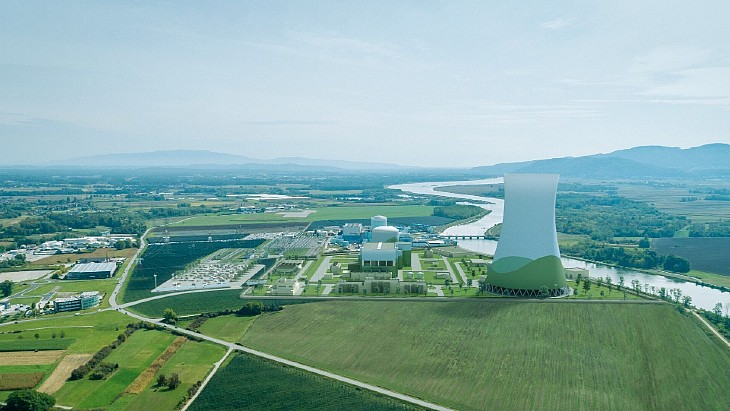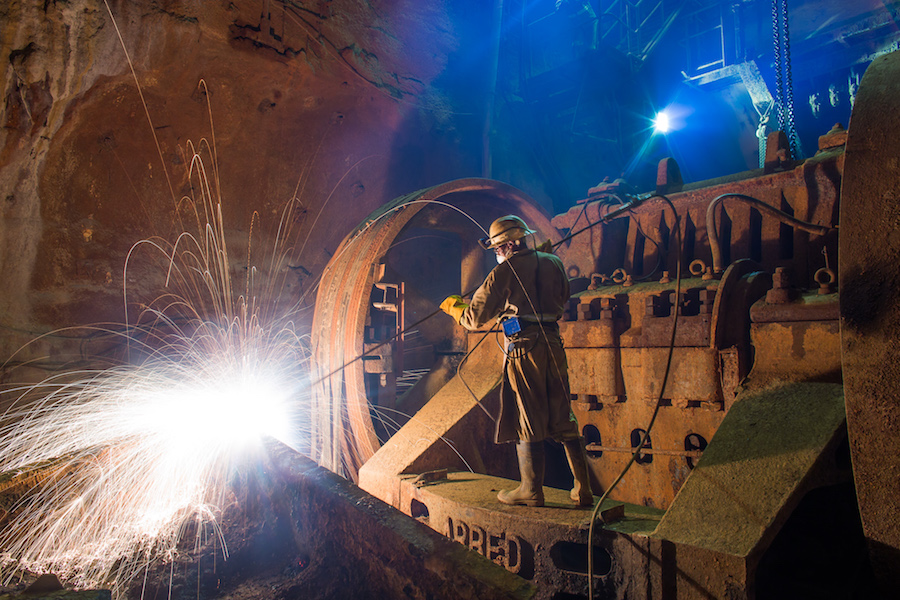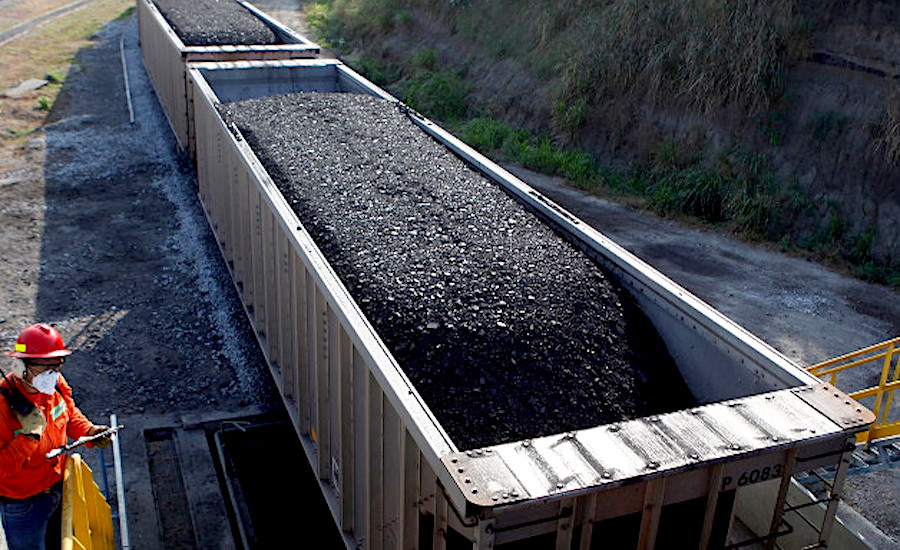GLOBAL NUKE NEWZ
Grossi praises Brazil's contributions to nuclear development
25 June 2024
International Atomic Energy Agency Director General Rafael Mariano Grossi has highlighted the importance of Brazil for the global nuclear sector. During a trip to the country last week, he signed an agreement formalising the designation of Brazil's Institute for Energy and Nuclear Research as an IAEA Collaborating Centre.
.jpeg?ext=.jpeg) The signing of the agreement by Grossi (left) and Rondinelli (right), formalising IPEN-CNEN's designation as an IAEA Collaborating Centre (Image: Douglas Troufa/CNEN)
The signing of the agreement by Grossi (left) and Rondinelli (right), formalising IPEN-CNEN's designation as an IAEA Collaborating Centre (Image: Douglas Troufa/CNEN)"As we face the challenge of climate change, the key role of nuclear energy is set to grow and Brazil is uniquely situated to take full advantage of this," Grossi said in an address to the Chamber of Deputies, the lower house of the National Congress. "A global energy debate without Brazil makes no sense. A global nuclear debate without Brazil makes no sense."
Speaking with Minister of Mines and Energy Alexandre Silveira, Grossi said: "The IAEA encourages the continuous development of the fuel cycle in Brazil, given its potential to become a key actor in the nuclear sector production chain. These developments are crucial for strategic growth and energy security in the country."
He also addressed the Brazilian Nuclear Programme Development Committee, highlighting the critical role of nuclear energy for Brazil's economic growth and future decarbonisation plans.
During his visit, Grossi also highlighted the first-of-its-kind collaboration of the IAEA with the G20 on nuclear power. This new cooperation started this year when the Brazilian Presidency invited the IAEA to participate in the G20's Energy Transitions Working Group. The IAEA is presenting a series of briefings and reports to inform G20 members on the key role that nuclear energy can play in the energy mix and emphasising the need to accelerate financing in order to reach net zero targets.
In Rio de Janeiro, he visited the Nuclear Medicine Service at António Pedro University Hospital, where doctors explained how the IAEA's support, providing advanced equipment and training, has greatly improved early cancer detection and treatment quality.
The IAEA is also supporting the Brazilian Navy in its goals to increase medical services for remote communities located in the Amazon River delta. Two mammography machines have been installed on the ships Soares de Meirelles and Carlos Chagas, allowing these communities to have access to breast cancer diagnostic services for the first time.
Grossi also signed an agreement with Minister of Science, Technology and Innovation Luciana Santos to use nuclear science to study harmful algal blooms, microplastics, ocean acidification and more in Antarctica.
He also met with Admiral Marcos Olsen and discussions included Brazil's plans to develop naval nuclear propulsion. "The IAEA and Brazil are committed to working together for highest non-proliferation standards as Brazil advances naval nuclear propulsion plans," Grossi said.
Grossi also visited the headquarters of the Brazilian-Argentine Agency for Accounting and Control of Nuclear Materials (ABACC). "ABACC has played a key role in regional stability and its importance will only grow as Brazil embarks on naval nuclear propulsion. I am looking forward to continuing the strong cooperation between the IAEA, ABACC, Brazil and Argentina," he said.
IAEA Collaborating Centre
The IAEA's first Collaborating Centre on Nuclear Security in Latin America - the National Nuclear Energy Commission's (CNEN's) Instituto de Pesquisas Energéticas e Nucleares (IPEN-CNEN) - was also established during the trip. IPEN-CNEN, CNEN's technical-scientific unit in São Paulo, expressed interest in joining this scheme and, on 7 June, the IAEA approved the proposal for its designation.
An agreement was signed on 21 June by Grossi and CNEN President Francisco Rondinelli, formalising the designation. As an IAEA Collaborating Centre, IPEN-CNEN will assist the IAEA in activities in the areas of computer security, radiation detection and physical protection for nuclear security, for a period of four years.
"All the activities we have, of the International Atomic Energy Agency, in Brazil, need to have the indispensable cooperation of CNEN," Grossi said. "We recognise this crucial role of CNEN in the development of nuclear technology in the country. We are very grateful for this cooperation, which will continue and increase more and more."
Brazil currently has two operating nuclear power reactors and a third under construction. The country's 2050 national energy plan indicates that it could add 10 GW of nuclear in the next 30 years, which is enough to provide power for about 10 million people, with a possibility to include small modular reactors in its energy mix after 2030.
Ohi units cleared for another 10 years' operation
26 June 2024
Japan's nuclear regulator has approved Kansai Electric Power Company's long-term reactor management plan for units 3 and 4 of its Ohi nuclear power plant in Fukui prefecture, allowing the units to operate beyond 30 years. They become the first reactors to be permitted to operate up to 40 years under new legislation.
.jpg?ext=.jpg) The Ohi plant, with units 3 and 4 in the foreground and the shut down units 1 and 2 behind (Image: Kansai)
The Ohi plant, with units 3 and 4 in the foreground and the shut down units 1 and 2 behind (Image: Kansai)Under regulations which came into force in July 2013, Japanese reactors had a nominal operating period of 40 years. One extension to this - limited to a maximum of 20 years - could be granted, requiring amongst other things, a special inspection to verify the integrity of reactor pressure vessels and containment vessels after 35 years of operation.
However, in December 2022, the NRA approved a draft of a new rule that would allow reactors to be operated for more than the current limit of 60 years. Under the amendment, the operators of reactors in use for 30 years or longer must formulate a long-term reactor management plan and gain approval from the regulator at least once every 10 years if they are to continue to operate. The new policy effectively extends the period reactors can remain in operation beyond 60 years by excluding the time they spent offline for inspections from the total service life.
The legislation was approved by Japan's Cabinet in February last year and enacted in May 2023. It comes into full effect in June next year.
The Ohi 3 and 4 reactors gained permission for operation extensions to 40 years under the old regulatory system in November 2021 and August 2022, respectively.
Kansai submitted an application to the Nuclear Regulation Authority (NRA) on 21 December to operate the units for over 60 years. The two 1180 MWe pressurised water reactors were connected to the grid in June 1991 and June 1992, respectively.
With the NRA's approval, Ohi 3 can now operate until 17 December 2031, while Ohi 4 can operate until 1 February 2033.
"We will continue to actively incorporate the latest knowledge from Japan and abroad and reflect it in plant design and equipment maintenance, thereby striving to improve the safety and reliability of nuclear power plants," Kansai said.
Kyushu Electric Power Company submitted its long-term reactor management plan to the NRA on 24 June for units 1 and 2 of its Sendai nuclear power plant in Kagoshima Prefecture.
SMR power plant planned for Swedish site
26 June 2024
Small modular reactor project development company Kärnfull Next has announced the municipality of Valdemarsvik in Östergötland county in southeastern Sweden as a new candidate site to host up to six reactors.
-property-(Latona-Group).jpeg?ext=.jpeg) The proposed site (Image: Latona Group)
The proposed site (Image: Latona Group)
The company has entered into an exclusive partnership agreement with landowner Latona Group for the exploration rights for nuclear power on the site. "The ongoing study, expected to be finalised after the summer, has shown promising preliminary results leading the companies to jointly inform the municipality, site neighbours and now the general public about the plans for an SMR Campus," Kärnfull Next said.
The company noted that the property includes areas that were identified as suitable for nuclear power in studies going back as far back as the 1970s. With more than 1300 hectares in total, it said the site was appealing for co-location with 2030s energy-intensive industries, such as AI data centres. The large coastal site in Östergötland would be part of Kärnfull Next's Re:Firm South SMR programme, aiming to expand carbon-free and dispatchable energy production across southern Sweden.
"Location, topography and cooling conditions in a forward-looking municipality with extensive rural areas are examples of early indications of a positive outcome from the current stage," it said. "The project in Valdemarsvik offers significant opportunities for local job creation - a single SMR is estimated to create around 500 direct and indirect jobs per year for 70 years."
-(2).jpg)
Illustration of a multi-unit SMR campus (Image: Instance/MIT)
The SMR campus in Valdemarsvik is initially planned to host between four and six small light water reactors, adding between 10-15 TWh of electricity generation per year.
"We are very enthusiastic about the indications from our preliminary study in Valdemarsvik," said Kärnfull Next CEO Christian Sjölander. "This site has potential to become a key component in our programme to supply large amounts of stable and sustainable energy to regions with significant capacity needs, and create substantial economic and social benefits for the local communities."
Gustav Carp, owner of Latona Group, added: "We are very pleased to collaborate with Kärnfull Next on this exciting project. The property is likely to offer uniquely favourable conditions for nuclear power, and we look forward to being part of the development of fossil-free energy production in the region. This initiative can create significant value for Valdemarsvik and its residents."
In March 2022, Kärnfull Next signed a memorandum of understanding with GE Hitachi Nuclear Energy on the deployment of the BWRX-300 in Sweden.
Kärnfull Next has been conducting site selection and feasibility studies in several municipalities in Sweden since 2022. By establishing multiple SMR parks as part of the same programme, the company expects to achieve economies of scale in terms of technology selection, construction partners, power purchase agreements and financing partners.
In August 2023, Nyköping was announced as another candidate site within the programme. Kärnfull Next said further feasibility studies are expected "to reach sufficient maturity levels to be announced later this year".
GEN energija lists JEK2 studies to be published ahead of referendum
25 June 2024
Slovenia's GEN energija has published an analysis concluding that the proposed JEK2 new nuclear project location is suitable from a seismic activity point of view - and also outlined a series of studies it aims to publish before a referendum is held on nuclear energy later this year.
 How JEK2 could look (Image: GEN energija)
How JEK2 could look (Image: GEN energija)
In its latest update on the state of the JEK2 project for two new nuclear units near the existing Krško nuclear power plant, GEN said "several analyses were carried out, which investigated the geology of the Krška basin and the proximity of possible JEK2 locations. They showed that the area [of the existing plant and earmarked for the proposed plant] ... is suitable for these facilities from the point of view of seismic activity. The Krška basin is considered to be the most geologically, geotechnically and seismologically researched area in Slovenia and beyond. The results of the research so far show that the design seismic loads (displacements, velocities and accelerations of the ground) allow the safe operation of the nuclear power plant and the safe design, construction and operation of JEK2, in accordance with international nuclear standards".
GEN says that about 80 - 20% - of the world's nuclear power plants are located and operate safely in areas of moderate or high seismic risk, with Slovenia located in a "moderate" area and has referenced there has been on-going safety research dating back decades.
The company has also listed a series of studies and documents which, at the request of the Ministry of Finance and the Ministry of Environment, Space and Energy, will be published by October, to "enable citizens to make an informed decision in the autumn referendum".
As well as the seismic study, there will also be ones on flood safety, how the new units will be integrated within the national electricity grid, an economic analysis including the "related and indirect investment costs", the financial and security risks relating to the import of nuclear fuel and the planned handling of waste from the new plant.
GEN energija is also conducting an information roadshow across the country to present information and answer questions about the proposed project. There is also a dedicated jek2.si website.
The JEK2 project
Slovenia's plan is to build the new nuclear power plant, with up to 2400 MW capacity, next to its existing nuclear power plant, Krško, a 696 MWe pressurised water reactor which generates about one-third of the country's electricity and which is co-owned by neighbouring Croatia. Prime Minister Robert Golob has committed to holding a referendum on the project before it goes ahead, and has suggested it could be held later in 2024.
The current timetable for the project is for a final investment decision to be taken in 2028, with construction beginning in 2032. In October, GEN Energy CEO Dejan Paravan said there were three technology providers being considered for the project - Westinghouse, EDF and Korea Hydro & Nuclear Power - who all had strengths and "the decision will not be easy".
Construction of WIPP ventilation system complete
24 June 2024
Now that construction of the new large-scale ventilation system at the Waste Isolation Pilot Plant (WIPP) is complete, the US Department of Environmental Management is aiming for it to be fully operational in 2026.
.jpg?ext=.jpg) Finishing off construction of the final large ductwork at the SSCVS (Image: DOE Office of Environmental Management)
Finishing off construction of the final large ductwork at the SSCVS (Image: DOE Office of Environmental Management)
WIPP, in New Mexico, is the USA's only repository for the disposal of transuranic, or TRU, waste which includes clothing, tools, rags, residues, debris, soil and other items contaminated with small amounts of plutonium and other man-made radioactive elements from the US military programme. The repository is excavated out of a natural rock salt layer 650 metres below ground, and has been operational since 1999.
The new Safety Significant Confinement Ventilation System (SSCVS) is being built in tandem with a new utility shaft. The SSCVS will pull air through the repository, pre-filter it to remove salt and can also, when required, send the air through a high-efficiency particulate air (HEPA) filtration system before releasing it to the environment. When it is fully operational, the new system will increase underground airflow from 170,000 cubic feet (4814 cubic metres) per minute up to 540,000 cubic feet per minute. The increased airflow will mean that activities to emplace sealed waste drums in the repository can take place at the same time as facility mining and maintenance operations.
WIPP's management and operations contractor, Salado Isolation Mining Contractors (SIMCO), was able to begin commissioning phase work of initial portions of the SSCVS facility and systems in October 2023. "Completing SSCVS construction allows us to pivot our focus to testing and commissioning the remaining SSCVS systems," said Ken Harrawood, SIMCO's president and programme manager at WIPP.
Testing and commissioning includes testing systems, integration, developing operational procedures and guidelines, training and qualifying staff, after which the facility will be handed over to trained WIPP operations personnel to bring it online. The SSCVS commissioning phase is currently 85% complete, the Office of Environmental Management said.
Construction of the SSCVS began in 2018 with completion originally envisaged for 2021, but progress was impacted when WIPP, like most of the office's field sites, focused on essential mission-critical operations during the COVID-19 pandemic. The office has identified completing the commissioning of the SSCVS, and initiating the readiness review process, as one of its top priorities for 2024.
Committee to evaluate nuclear power option for Norway
24 June 2024
The Norwegian government has appointed a committee to conduct a broad review and assessment of various aspects of a possible future establishment of nuclear power in the country. It must deliver its report by 1 April 2026.
.jpg?ext=.jpg) Energy Minister Terje Aasland (left) and Kristin Halvorsen, who heads the new committee (Image: Arvid Samland, Energidepartementet)
Energy Minister Terje Aasland (left) and Kristin Halvorsen, who heads the new committee (Image: Arvid Samland, Energidepartementet)
"The need for emission-free and stable energy sources that can help deal with the natural and climate crisis and meet an increasing need for power, technological development, as well as plans for the establishment of nuclear power production by private actors in collaboration with municipalities, have contributed to the question of nuclear power being brought up to date again," said Energy Minister Terje Aasland. "Nuclear power is a complex energy source that affects a number of areas of society. There is therefore a need to obtain an updated and solid knowledge base on nuclear power as a possible energy source in the Norwegian power system."
The 12-person committee will be headed by Kristin Halvorsen, director of the Centre for International Climate and Environmental Research - Oslo (Cicero).
The Ministry of Energy said it has drawn up the mandate for the committee in consultation with several other ministries. The mandate "calls for a broad assessment of complex questions, and the selection is therefore put together by people with expertise and experience from various fields," the government said.
"An important topic the committee should shed light on is nuclear power's suitability for the Norwegian power system, research and technology development within various concepts for nuclear power (including fusion), costs and other significant consequences for authorities (including the municipal sector) and private actors, area and environmental effects, waste issues, nuclear safety, safeguarding and non-proliferation, preparedness and competence," the government said. "The committee shall discuss advantages and disadvantages of nuclear power, describe the current regulations and point out the need for regulatory development and other prerequisites that must be in place for any future establishment of commercial and industry-driven nuclear power.
"The committee shall provide an updated knowledge base on various types of nuclear power technology, technological maturity, assumed time perspective for scale-up and commercial availability, and costs. An account must also be given of relevant investment factors and requirements for infrastructure, including the need for network connection and what requirements must be made for a suitable location."
The Ministry of Energy has been given the authority to make small changes to the committee's mandate and to appoint a secretariat for the committee. "It is not realistic for the committee to possess all the necessary knowledge within the various areas of the themes," it said. "A resource group must therefore be established, consisting of professionals, who can assist and give input to the committee in important subject areas, and ensure the involvement of central specialist communities. The committee can engage external expertise if necessary."
Between 1951 and 2019, Norway operated four research reactors at the Kjeller and Halden sites, but these were not for power production. "As a starting point, Norway therefore has no experience with development, commercial operation, regulation and licence processing of this form of power production," the government said.
However, the government noted that nuclear power "has become part of the energy debate and plans for its development are being promoted".
In November 2023, the Ministry of Energy received notification of proposals for a study programme from Norsk Kjernekraft. This is the initial step in the licensing process, and triggers administrative law requirements for a proper case management. Norsk Kjernekraft wants to construct a nuclear power plant consisting of small modular reactors (SMRs) with a total output of 1500 MW in Taftøy Næringspark in Aure and Heim municipalities. The company has also announced ongoing work with several similar projects. In addition, several other municipalities and county councils have expressed an interest in nuclear power.
Kozloduy used fuel storage licence updated
26 June 2024
Bulgaria's Nuclear Regulatory Agency has issued a fresh non-time-limited licence to operate the used fuel storage facility at the Kozloduy nuclear power plant.
 Tsanko Bachiiski, NRA chairman, right, handed over the new licence to Kozloduy NPP executive director Valentin Nikolov (Image: NRA)
Tsanko Bachiiski, NRA chairman, right, handed over the new licence to Kozloduy NPP executive director Valentin Nikolov (Image: NRA)
The amended licence follows the amendments introducted in March this year to the country's Law on the Safe Use of Nuclear Energy. Instead of the licence being limited by time - notably for 10 years - it is open-ended but with a condition within the licence to carry out a safety review at least every 10 years.
The Agency said "the results of this review should justify the safe operation of the facility and are a prerequisite for the chairman of the NRA to issue an order for their approval and determine the period for carrying out the next periodic safety review".
The Kozloduy plant is in the northwest of Bulgaria on the Danube River and provides about 34% of the country's electricity. It features two Russian-designed VVER-1000 units currently in operation, which have both been through refurbishment and life extension programmes to enable operation for 60 years.
According to World Nuclear Association's Information Paper on Nuclear Power in Bulgaria, used fuel at Kozloduy is initially stored in a pool at the site which was built in 1990 and upgraded and given a new licence by the Bulgarian Nuclear Regulatory Agency in 2001. A dry used fuel storage facility was built near this at Kozloduy and opened in May 2011 with a capacity of 5200 fuel assemblies in 72 casks for storage for up to 50 years.
Researched and written by World Nuclear News
.jpg?ext=.jpg)
.jpg?ext=.jpg) OPG plans to build SMRs at the Darlington New Nuclear site (Image: OPG)
OPG plans to build SMRs at the Darlington New Nuclear site (Image: OPG).jpg?ext=.jpg) Langer Heinrich returned to commercial operation earlier this year (Image: Paladin)
Langer Heinrich returned to commercial operation earlier this year (Image: Paladin)



